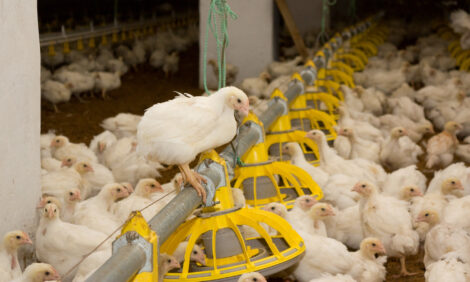



AAAP: Novel APEC serogroup pathogenicity
Novel APEC serogroups O152 and O145 caused the highest embryonic mortality[Excerpts of a poster presentation by Klao Runcharoon and colleagues, Department of Population Health, College of Veterinary Medicine, University of Georgia, during the 2024 annual conference of the American Association of Avian Pathologists]
Avian Pathogenic Escherichia coli (APEC) causes colibacillosis resulting in systemic or localized infections in poultry including airsacculitis, septicemia, pericarditis, perihepatitis, salpingitis, and cellulitis. Serogrouping based on the detection of somatic O-antigens is a useful tool to classify APEC and relate to disease pathogenicity. There are approximately 188 E. coli serogroups and the most common types associated with colibacillosis include O1, O2, and O78.
However, our APEC collection from avians diagnosed with colibacillosis in Georgia poultry populations has identified emerging serogroups with limited information on their pathogenicity. Therefore, the pathogenicity features of these emerging serogroups were evaluated using multiple approaches including the serum resistance assay, embryo lethality assay, and chick challenge assay.
We selected 10 novel APEC strains from our collection which included serogroups O25, O15, O91, O152, O161, O86, O88, O115, O62/O68 and O45. We tested their ability to grow in chicken serum in 96 well-plates. A bacterial suspension was added to the chicken serum and adjusted to a concentration of 106 colony-forming units (CFU/mL). Serum was removed from each well at 0 and after 4 hours incubation at 40◦C. The suspensions were diluted and plated and the CFU was determined after 24 hours of incubation. All selected APEC serogroups except O25 were resistant to serum.
For the assay, 12 day of age embryonic eggs were injected with 300-500 CFU/0.1 mL of each strain via the allantoic fluid. Embryos were candled daily for five consecutive days, and deaths were recorded. The results showed that the highest mortality (100%) was found for APEC serogroups O152 and O145, while O88 caused only 50% mortality. Further assessment of the pathogenicity in chicks was also performed using a chick challenge assay. Twelve one-day-old chicks per group were inoculated subcutaneously with 108 CFU/0.1 mL of the bacterial strain. Times of death and clinical scores were combined to give pathogenicity scores.
E. coli isolates that killed >50%, 10%-50%, and 0-10% of chicks were considered as virulent, moderately virulent, and avirulent, respectively. Analysis found that O15, O91, and O88 had significantly lower (p< 0.05) pathogenicity scores than the positive control group APEC O18. Serogroups O25, O152, O115, and O45 had numerically higher pathogenicity scores than the positive control group.
Overall, the novel APEC strains exhibited different degrees of pathogenicity in both in vivo and in vitro assays. Some strains showed high virulence in all assays while some were less virulent warranting further investigation of their pathogenicity in older birds to establish new protection plans against these emerging serogroups.










